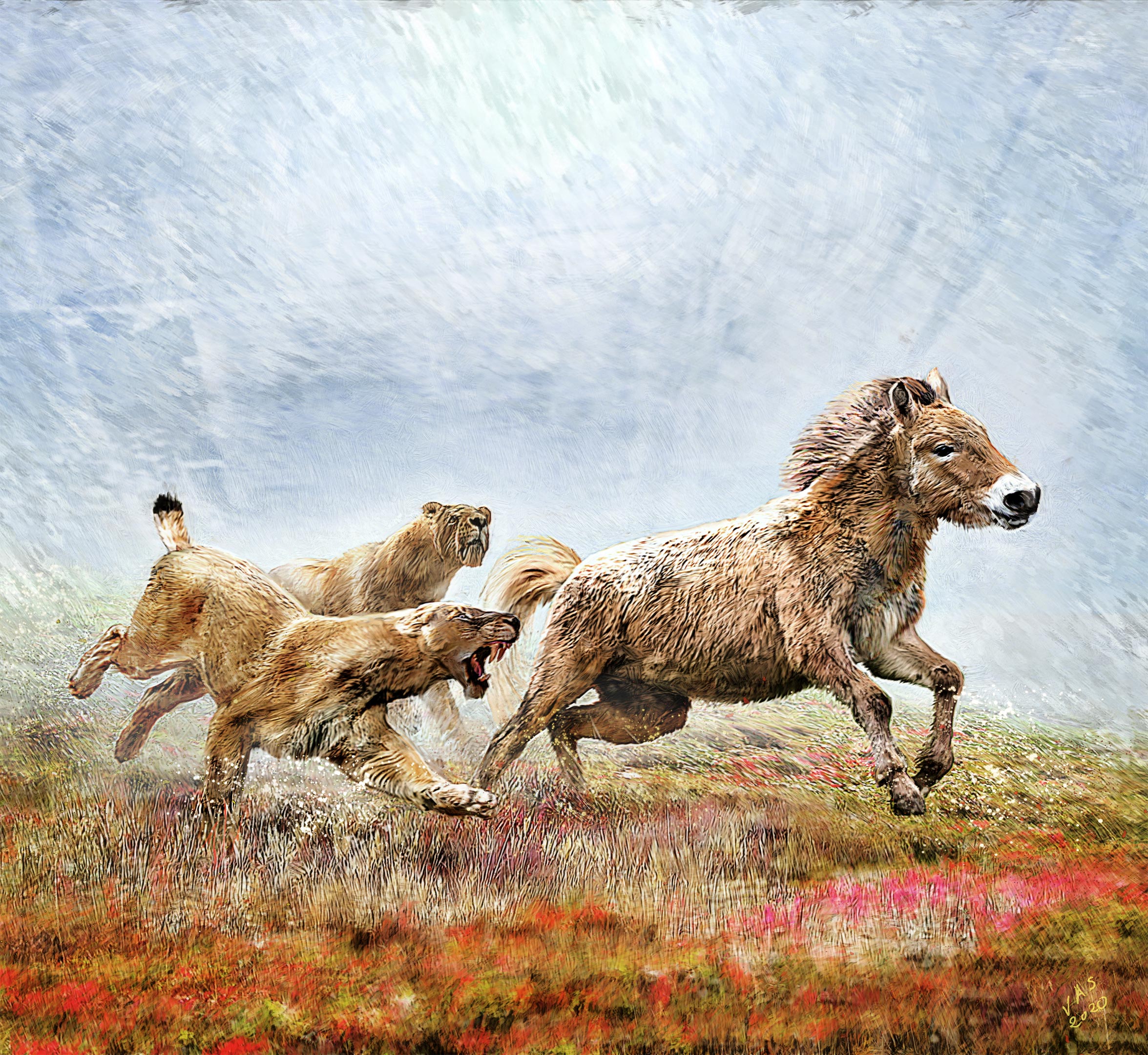Illustration from “Homotherium Latidens”. Photo credit: University of Copenhagen
Researchers at the University of Copenhagen have mapped the entire nuclear genome of a saber-toothed cat. The genetic study reveals new insights into a socially intelligent pack animal that specializes in prolonged long-range hunting.
Along with the woolly mammoth and the giant ground sloth, the saber-toothed cats were probably some of the most famous animals that lived during the Pleistocene and became extinct before the end of the last Ice Age. Saber-toothed cats have also been the subject of many research projects over the years.
Researchers at the University of Copenhagen have now succeeded for the first time in mapping the entire nuclear genome of a saber-toothed cat, the scimitar-toothed cat “Homotherium latidens.” you DNA The study shows which genes were highly selected and important for the evolution of the species.
“Their genetic makeup suggests that scimitar-toothed cats are highly skilled hunters. They likely had very good daytime vision and exhibited complex social behaviors. They had genetic adaptations for strong bones, as well as cardiovascular and respiratory systems, which meant that they were well suited for endurance sports. Based on this, we believe they hunted in a pack until their prey was exhausted in daylight with an endurance-based hunting style, ”says co-lead author Michael Westbury, postdoc at the Evolutionary Genomics Section, GLOBE Institute, University of Copenhagen .
Abundant species
The researchers extracted DNA from a Homotherium Fossil from Pleistocene Permafrost Sediments near Dawson City, Yukon Territory, Canada. This specimen was so old that it could not be dated using conventional radio-carbon dating, which means that it was at least 47.5 thousand years old.
The saber tooth
Previous research has postulated that the saber teeth might have been useful for hunting.
However, this new study shows that perseverance, rather than large teeth, were the keys to a successful hunt. The researchers suggest that large teeth were used as a mating indicator rather than an actual hunting function.
They then used various modern genome sequencing techniques to map the entire genome of the fossil. They used complex comparative analysis on modern living cat species such as lions and tigers and showed that this saber-toothed cat was genetically very diverse when compared to modern cat species.
“We know that genetic diversity depends on how many species of a given species exist. Because of this, our best guess is that there were many of these big cats. This also makes perfect sense, given that their fossils were found on every continent except Australia and Antarctica, ”says Michael Westbury.
Synergies with medical research and bioinformatics
Their analysis also showed that the saber-toothed cat is very distantly related to all modern cats. They were different from them at least 22.5 million years ago. In comparison, humans and gibbons split 15 to 20 million years ago.
“This was an extremely successful family of cats. They were present on five continents and roamed the earth for millions of years before becoming extinct. The current geological period marks the first time in 40 million years that the earth has been absent from Sabretooth predators. We just missed her, ”says co-lead author Ross Barnett.
The researchers also emphasize that their study is an example of how different research areas can benefit from each other. They hope to see similar bioinformatics methods for many other extinct animals in the future.
“Modern advances in medicine and genetic research mean that sequencing methods are much better for us today than they were a few years ago. In addition, we know from medical research which specific genes are associated in animals and humans. This means we can infer many things about extinct animals, as we did here. You could say that the rapid advance in medical research made this study possible, ”says Professor Tom Gilbert.
Reference: “Genomic Adaptations and Evolutionary History of the Extinct Scimitar Tooth Cat Homotherium latidens” by Ross Barnett, Michael V. Westbury, Marcela Sandoval-Velasco, Filipe Garrett Vieira, Sungwon Jeon, Grant Zazula, Michael D. Martin, Simon YW Ho, Niklas Mather , Shyam Gopalakrishnan, Jazmín Ramos-Madrigal, Marc de Manuel, M. Lisandra Zepeda-Mendoza, Agostinho Antunes, Aldo Carmona Baez, Binia De Cahsan, Greger Larson, Stephen J. O’Brien, Eduardo Eizirik, Warren E. Johnson, Klaus -Peter Koepfli, Andreas Wilting, Jörns Fickel, Liebe Dalén, Eline D. Lorenzen, Tomas Marques-Bonet, Anders J. Hansen, Guojie Zhang, Jong Bhak, Nobuyuki Yamaguchi and M. Thomas P. Gilbert, October 15, 2020, Current biology.
DOI: 10.1016 / j.cub.2020.09.051



